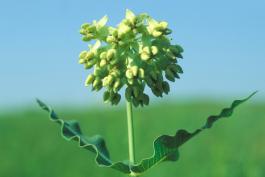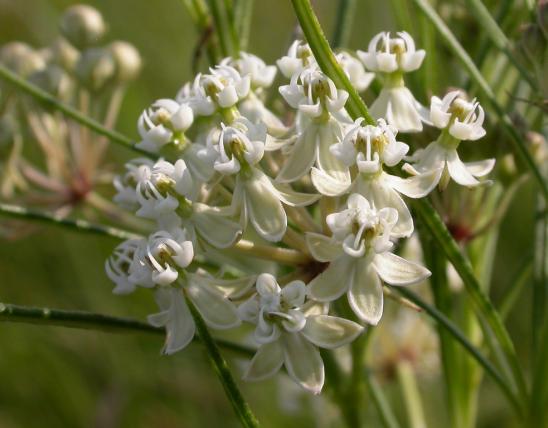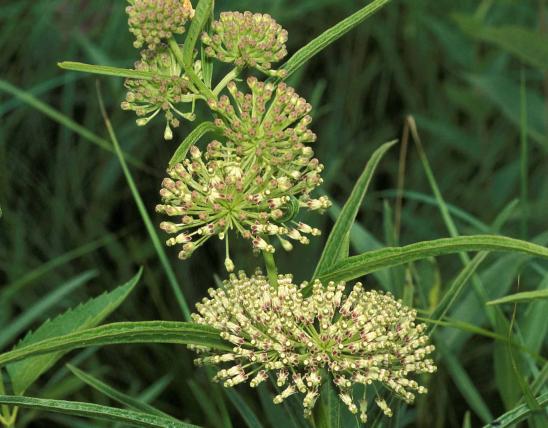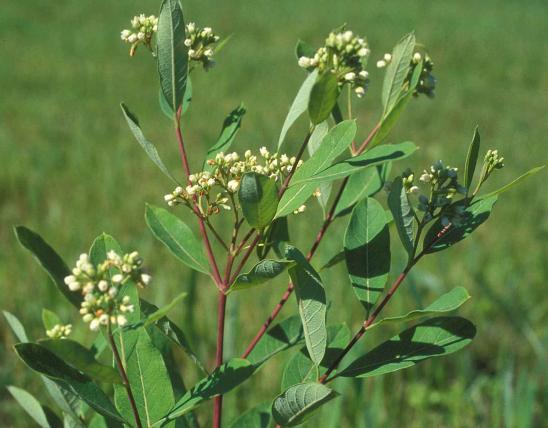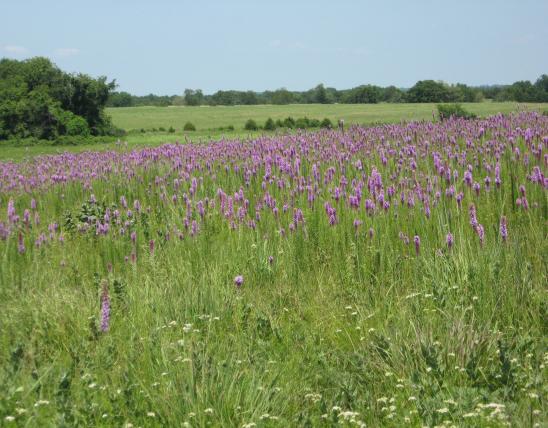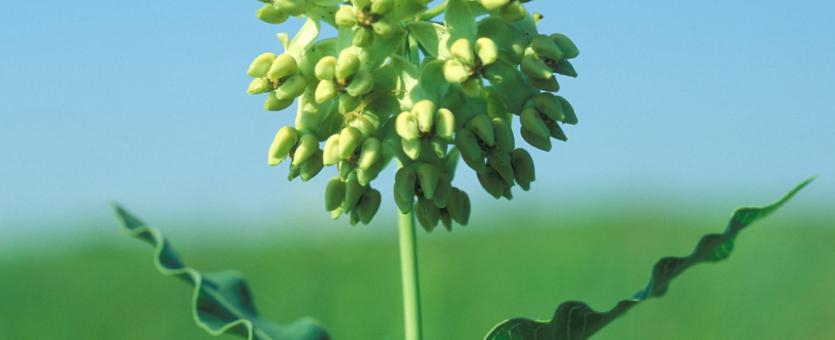
Mead's milkweed is a nonwoody, erect plant with a smooth stem and milky sap, and 2–6 pairs of opposite, narrow, tapering leaves. This perennial wildflower blooms from late May to mid-June, producing 1–2 clusters of flowers at the top of its stem. Each cluster has 5 to 14 (less than 20) flowers. The flowers are yellow-green or greenish-cream and are often tinged with purple. Individual flowers have five tubular hood-shaped structures with a slender “horn” extending from each one.
Seeds mature from July to October. Pods are green and gradually become darker as they mature, growing to 1½ to 4 inches long. A single plant may have multiple stems, which can be mistaken for individual plants. Each stem produces flowers for 2 to 3 years and then becomes dormant or disappears.
Similar species: Missouri has several other species of milkweeds. Learn more about them on their group page and on the several other individual species pages in this guide.
Height: 1 to 2 feet.

Historically, Mead’s milkweed ranged throughout much of Missouri. It is presently found in the Osage Plains region and the St. Francois mountains region of the Ozarks.
Habitat and Conservation
Habitats include mesic to dry tallgrass and upland prairies with sandstone or chert bedrock, prairie hay meadows, railroad rights-of-way, prairie remnants, virgin mesic silt loam prairies, and igneous glades.
Conservation efforts include delaying haying until September, periodic burning of prairies, and rotational grazing.
Status
A Missouri species of conservation concern; listed as endangered by the Missouri Department of Conservation and as threatened by the U.S. Fish and Wildlife Service. Destruction of native prairie habitat is the cause for its decline. Many populations contain genetically identical plants (having reproduced only via root division) and, lacking nearby plants with different genetics with which to cross-pollinate, do not produce viable seed.
Human Connections
Milkweeds, with the remarkable chemicals present in their sap, had many uses for Native Americans, who used it medicinally. The fibrous stems yielded material for cordage and weaving, and the silky hairs on the seeds have had various uses over the years.
Ecosystem Connections
The sap of most milkweeds is toxic and prevents the plants from being eaten. Some insects, however, can eat milkweeds and thus become unpalatable to predators themselves. Meanwhile, many insects sip freely of milkweed nectar, which is not toxic to them.


